About the project
For this project, a website for studying the Japanese language was created.
I will show everything that was taken into account in the process of creating the new website and what were the results.
Let's start:
Personas
In order to create the personas, I visited some Japanese language schools in my city and analyzed the profile of the people who were studying there. Also took the opportunity to interview some of them and find out if any student uses websites in order to complement their studies.
In general, most of them rather watch animes and read mangas instead of using websites.
Here are the data I collected:
Predominant age: 18 - 24
Predominant way of studying at home: Watching anime
Data collected in interviews


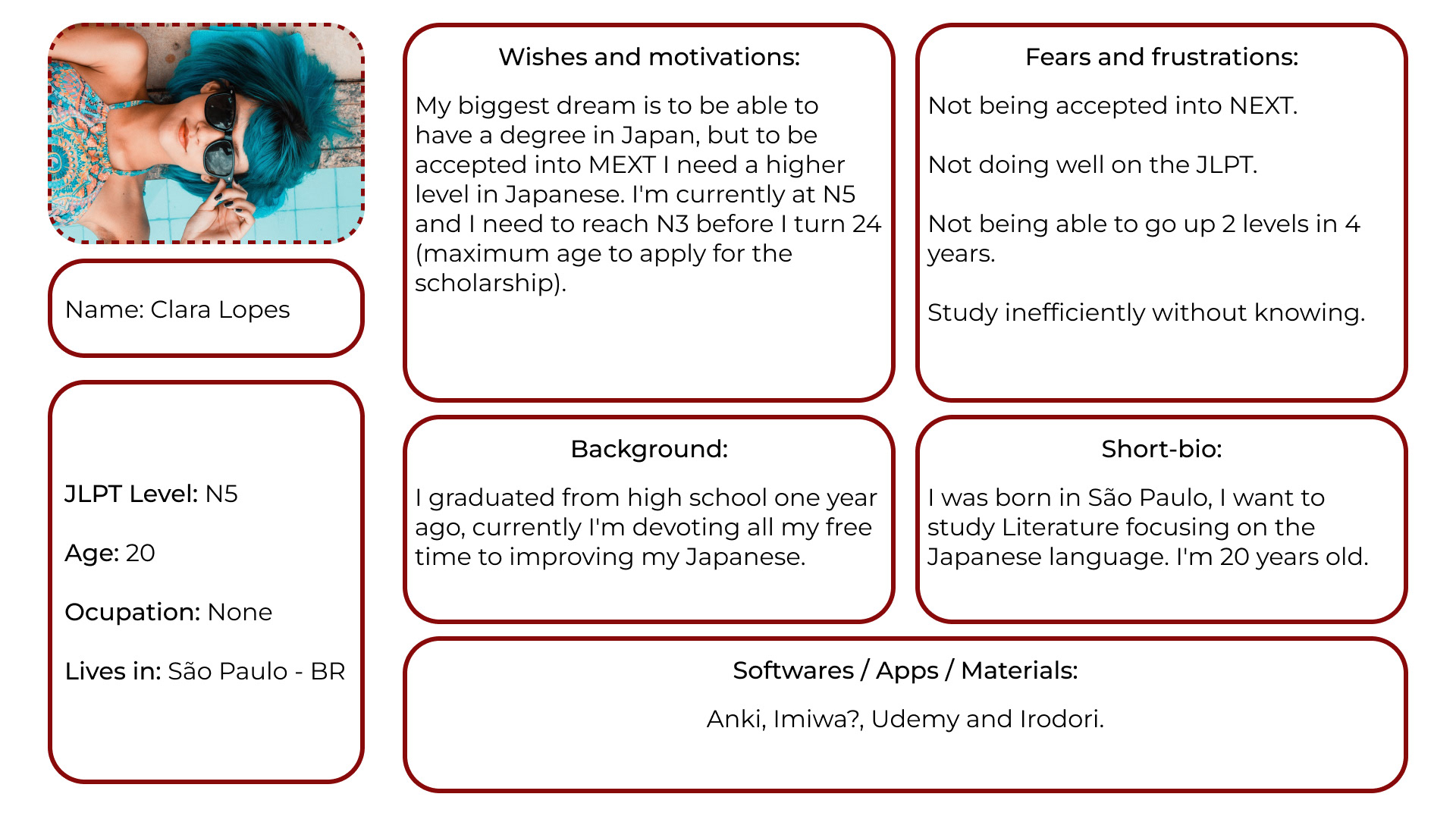
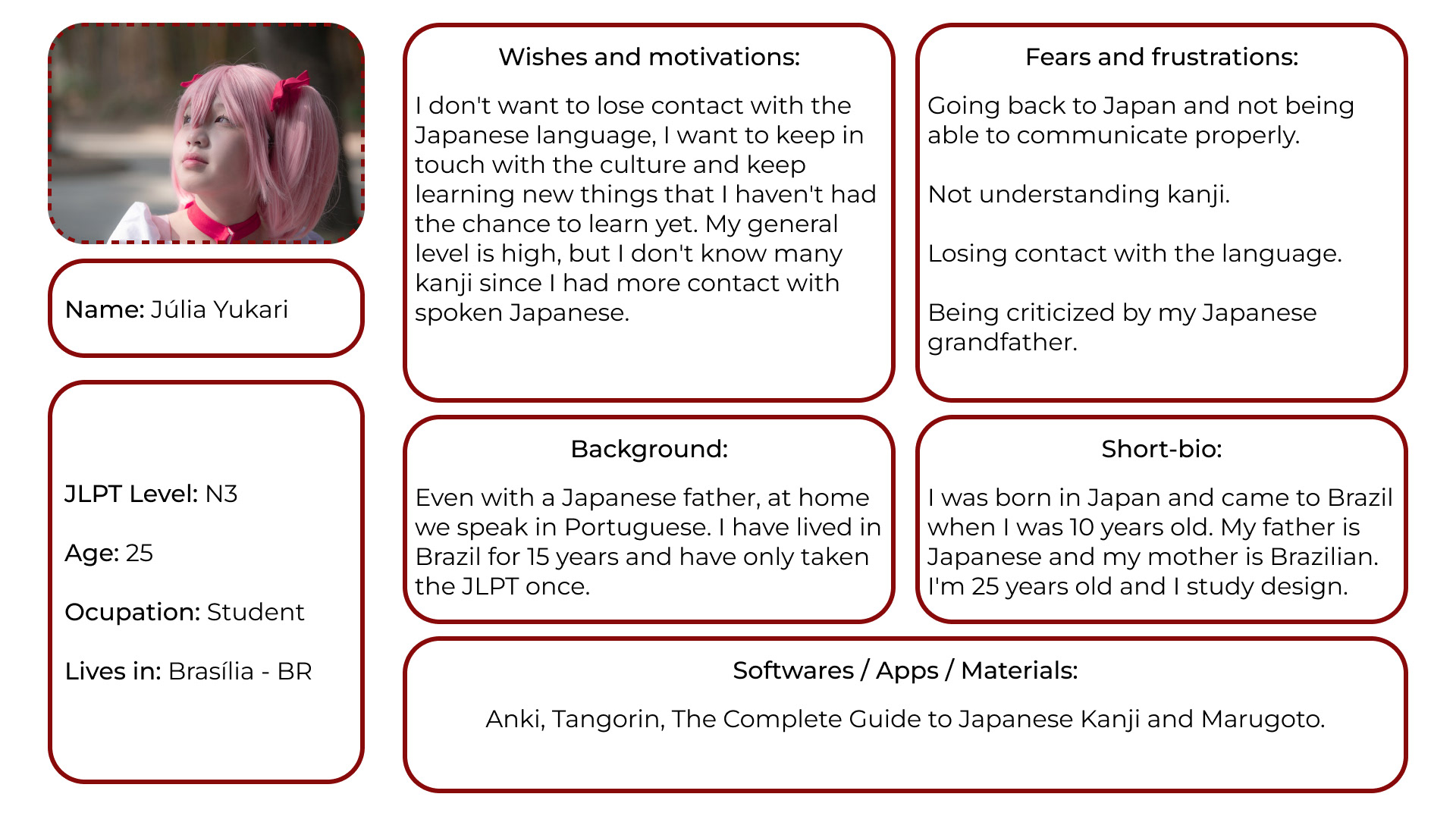
Jobs to be done
After creating the personas I took some time to understand their needs.
Most of them had a clear reason to study and most of them would lose motivation while doing it.
5Ws and 1H
Who? Students
What? Lose motivation
When? Start to study a new language
Where? In websites and schools
How? Giving up on studying
Why? Have too many doubts and don't understand things easily
I started researching what were the biggest challenges in learning japanese and the biggest two were always grammar and kanji.
What are the main difficulties in learning Japanese?
Grammar structure. At first, I was very intimidated by grammar particles and how every sentence should be arranged in Japanese. I researched many examples and took notes on the differences of the particles and when and where they should be placed. I carry a binder of all the Japanese notes I took throughout the years just in case I need to refer back to something, but other than that I’m confident in how I write in Japanese now.
Kanji. I’m positive any non-native learning Japanese like me would’ve had their “woah” moment once they encountered kanji. I didn’t begin the process of memorizing and taking notes on kanji after I made sure I mastered hiragana and katakana and intros/farewells in Japanese, plus I checked out a list online of beginner’s kanji and I disciplined myself to go with the easier ones first. Nowadays I keep a dictionary of 3,002 kanji possible to remember (including some kyūjitai 旧字体 and shinjitai 新字体 for some kanji) and I didn’t regret purchasing it at all! (...)
Planning the website
At first I was indecisive about the last button so I created more than one option.
Knowing the biggest challenges, I decided to divide the main part in the JLPT levels, so I could explain the specific grammar and kanji to every level. It is a way to avoid entering in contact to a super complex structure right in the beggining of your study.
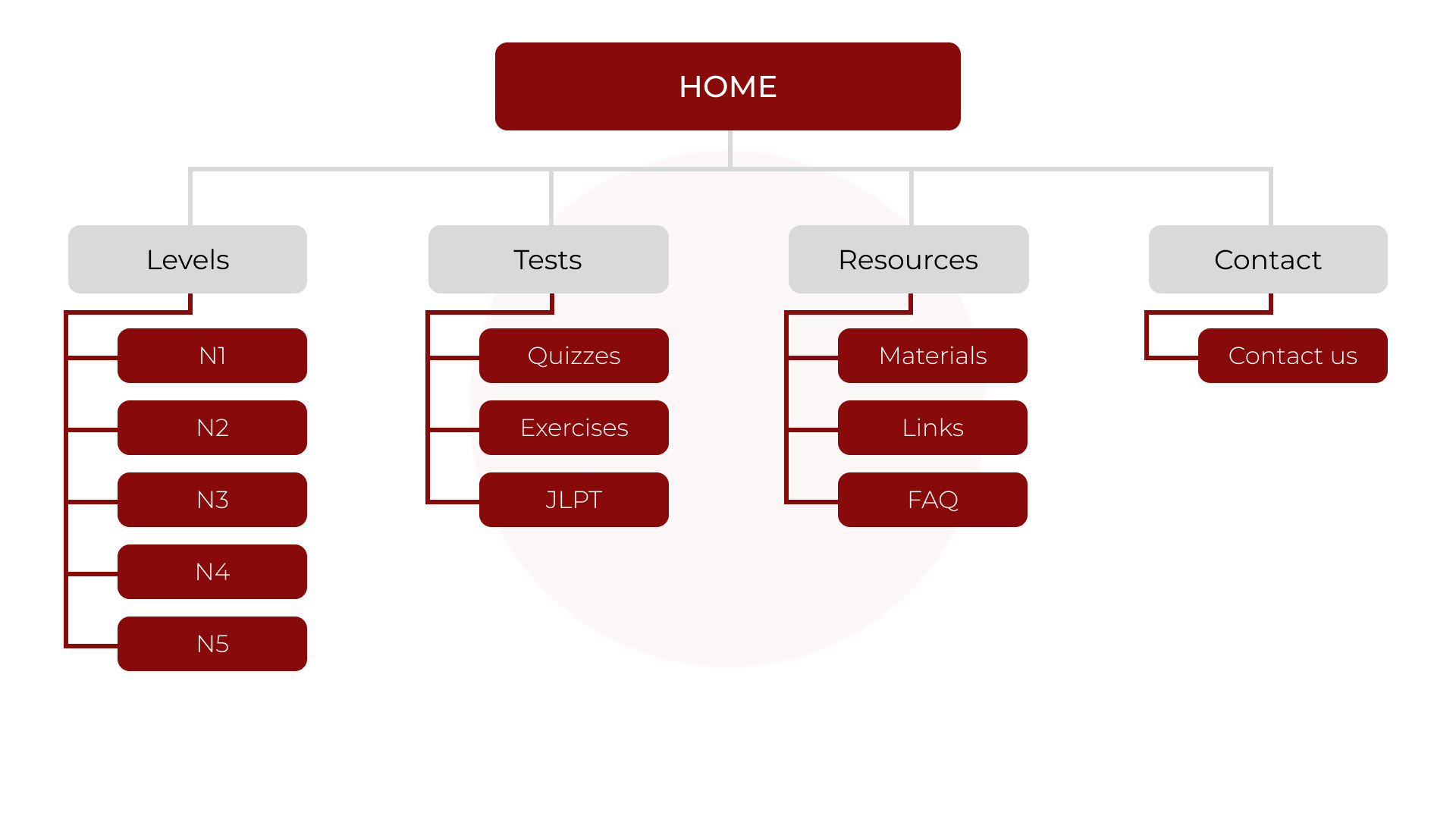
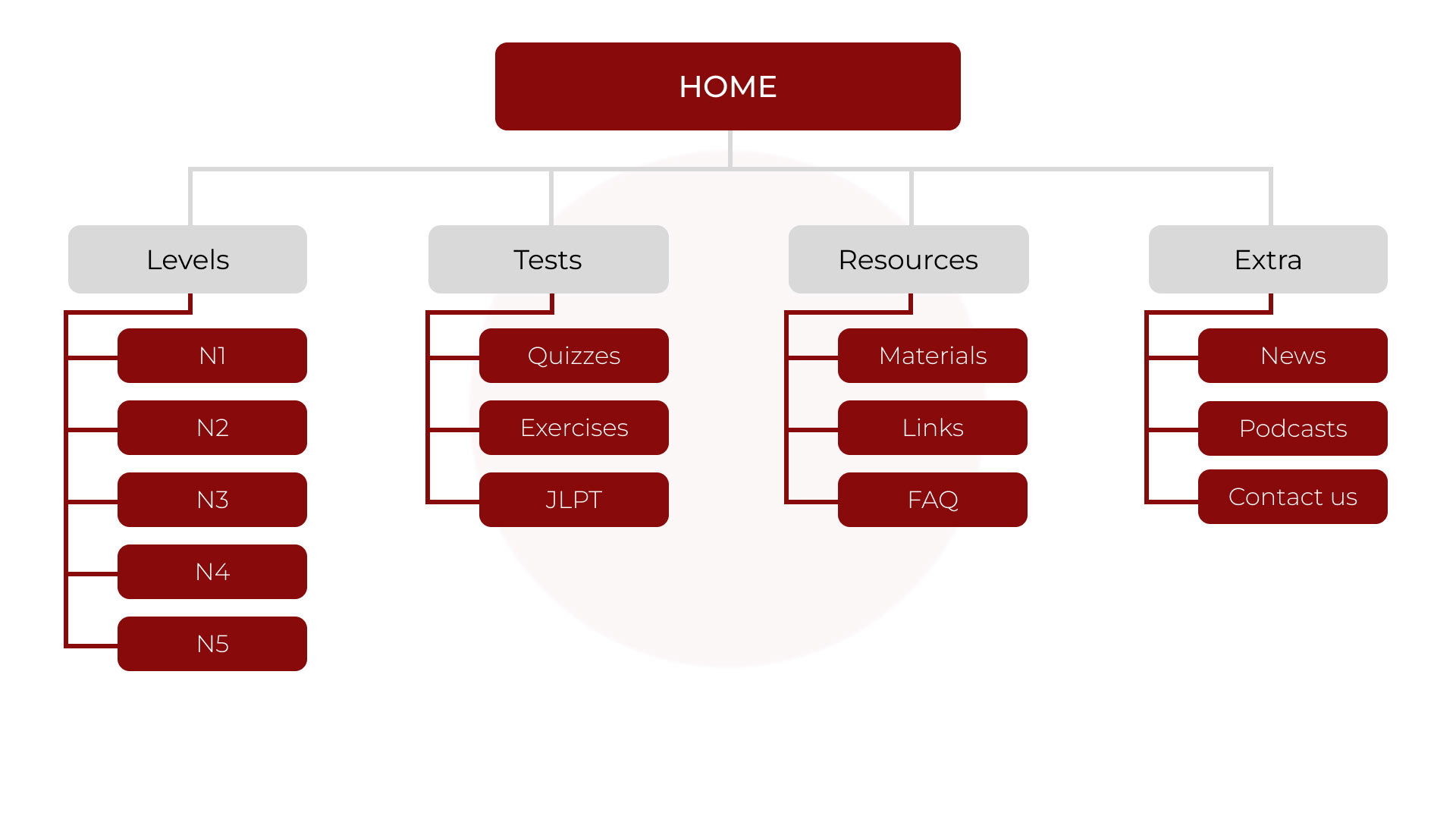
First sketch
For the first sketch I tried to show at least one japanese element in the landing page, so the visuals would also remeber the purpouse of the website.
I choose the circle in the Japanese flag to be the main point in the sketchs and tried to keep a simple and clean appearence.
I asked "What comes to your mind when you think of Japan?" in one of the interviews and these were the most answered:
Kimono
Cherry blossom
Zen gardens
Tea ceremony
Samurai code
Mount Fuji
Sushi
Japanese flag
Wooden houses with paper sliding doors
White socks and wooden sandals
Respectful people bowing to each other
Prototypes

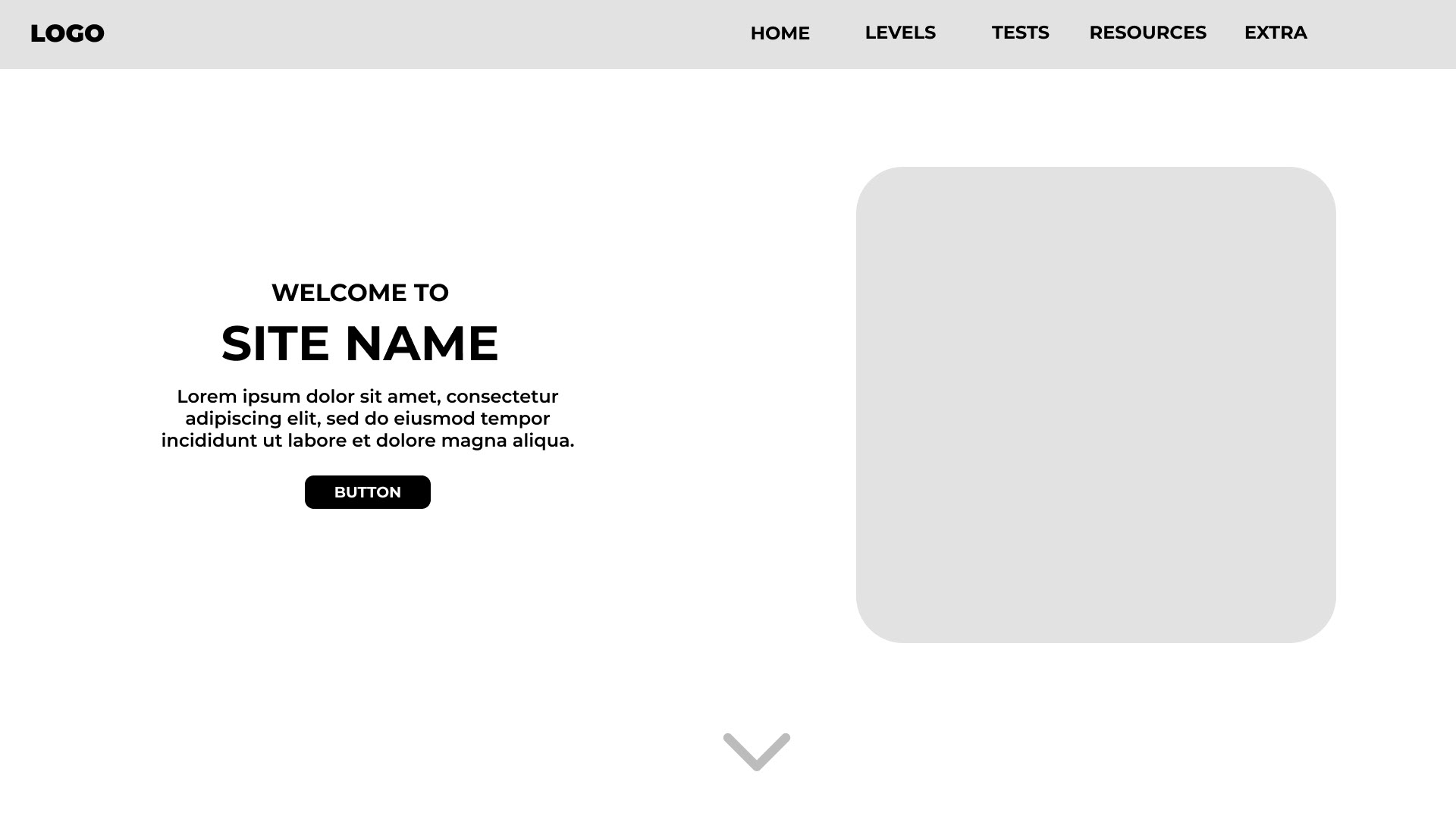
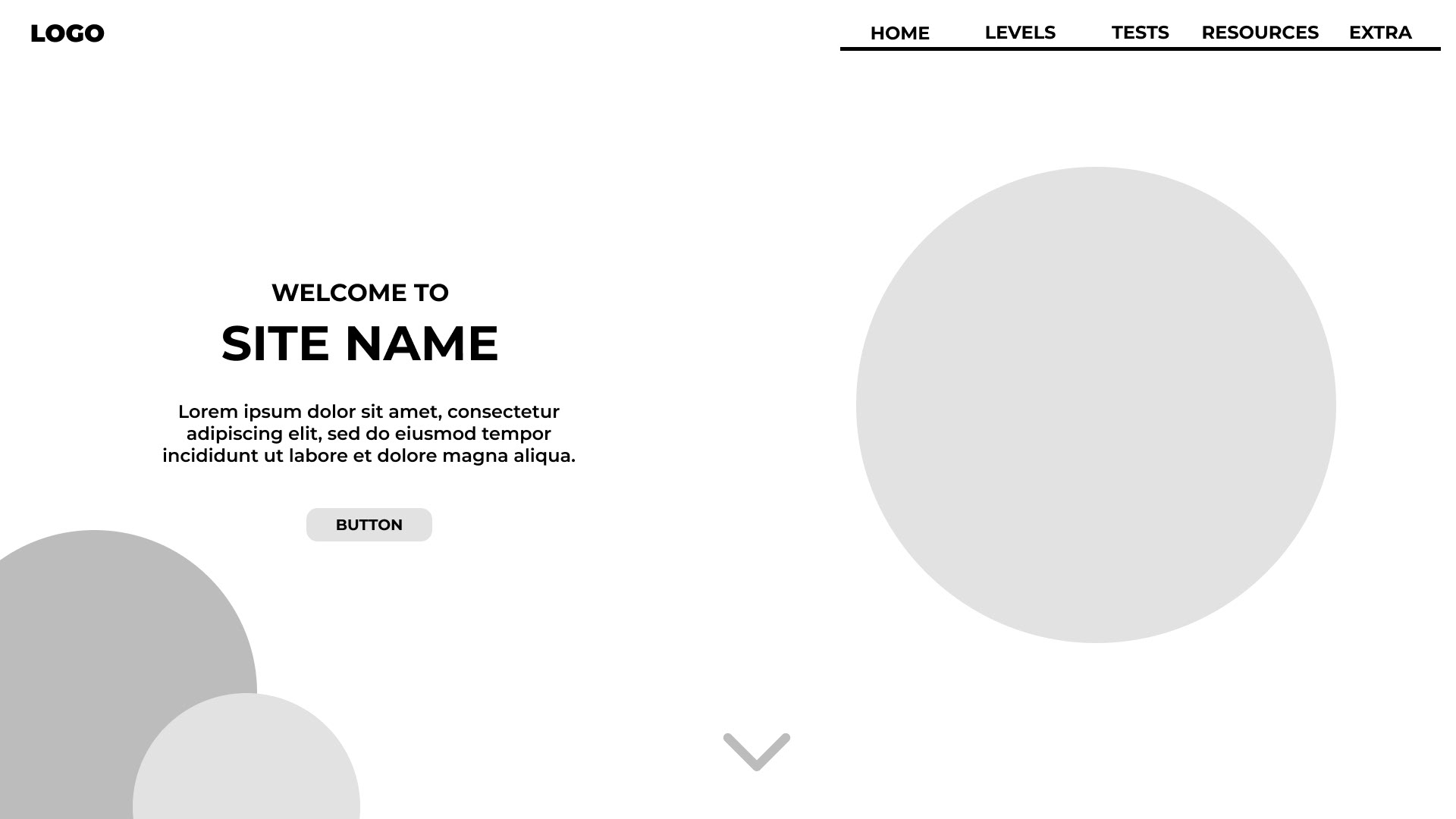
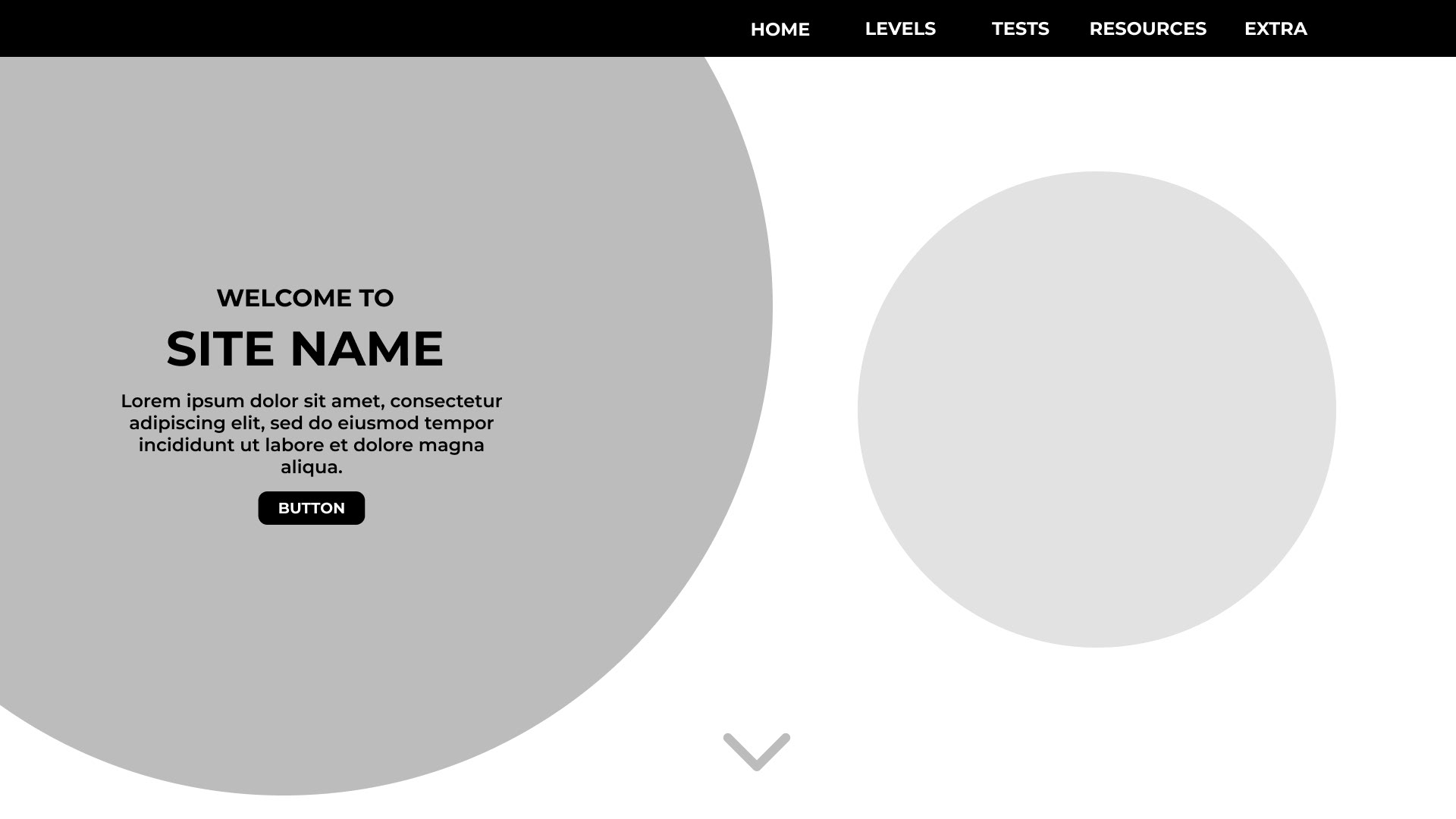
Moodboard
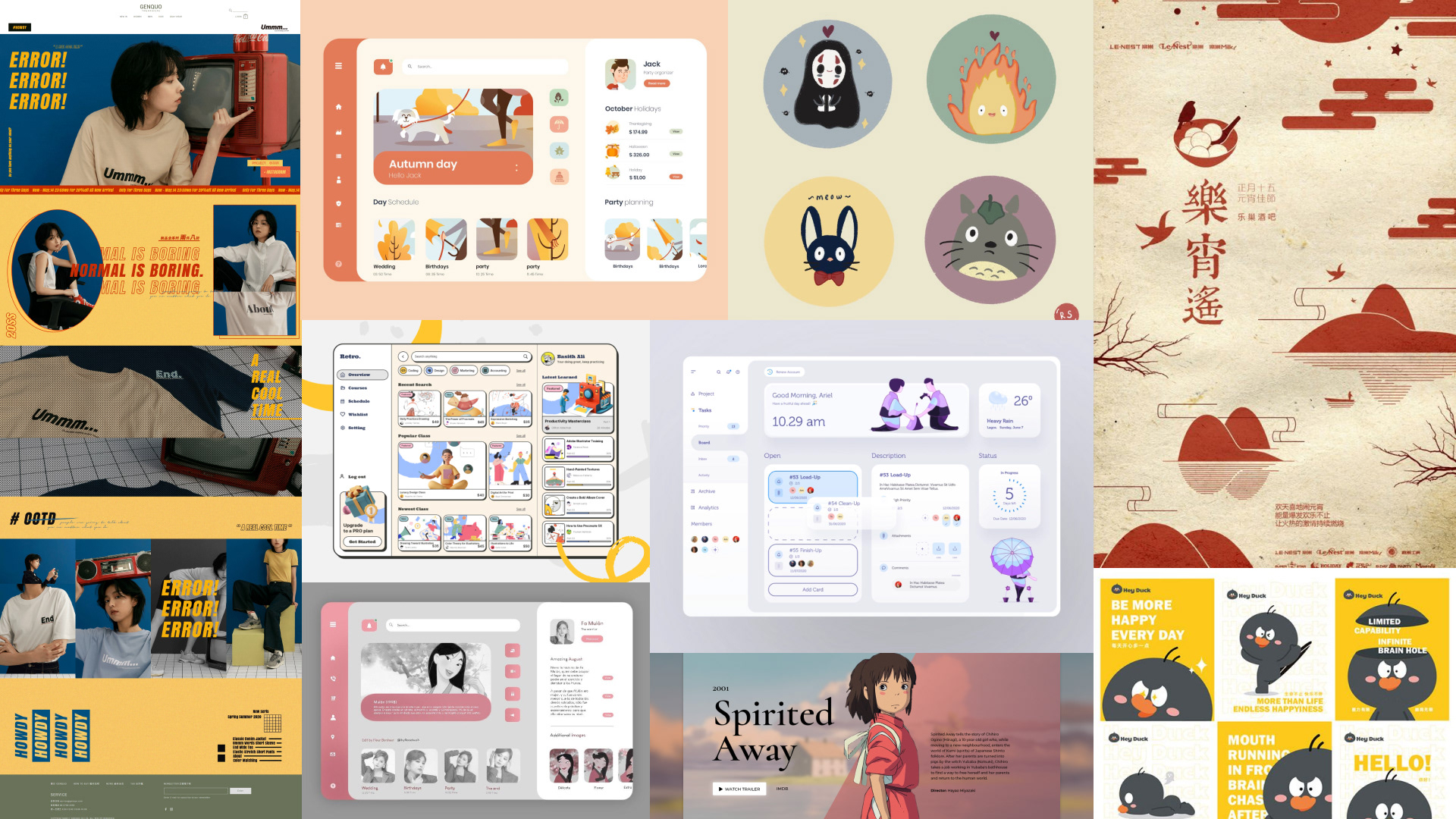
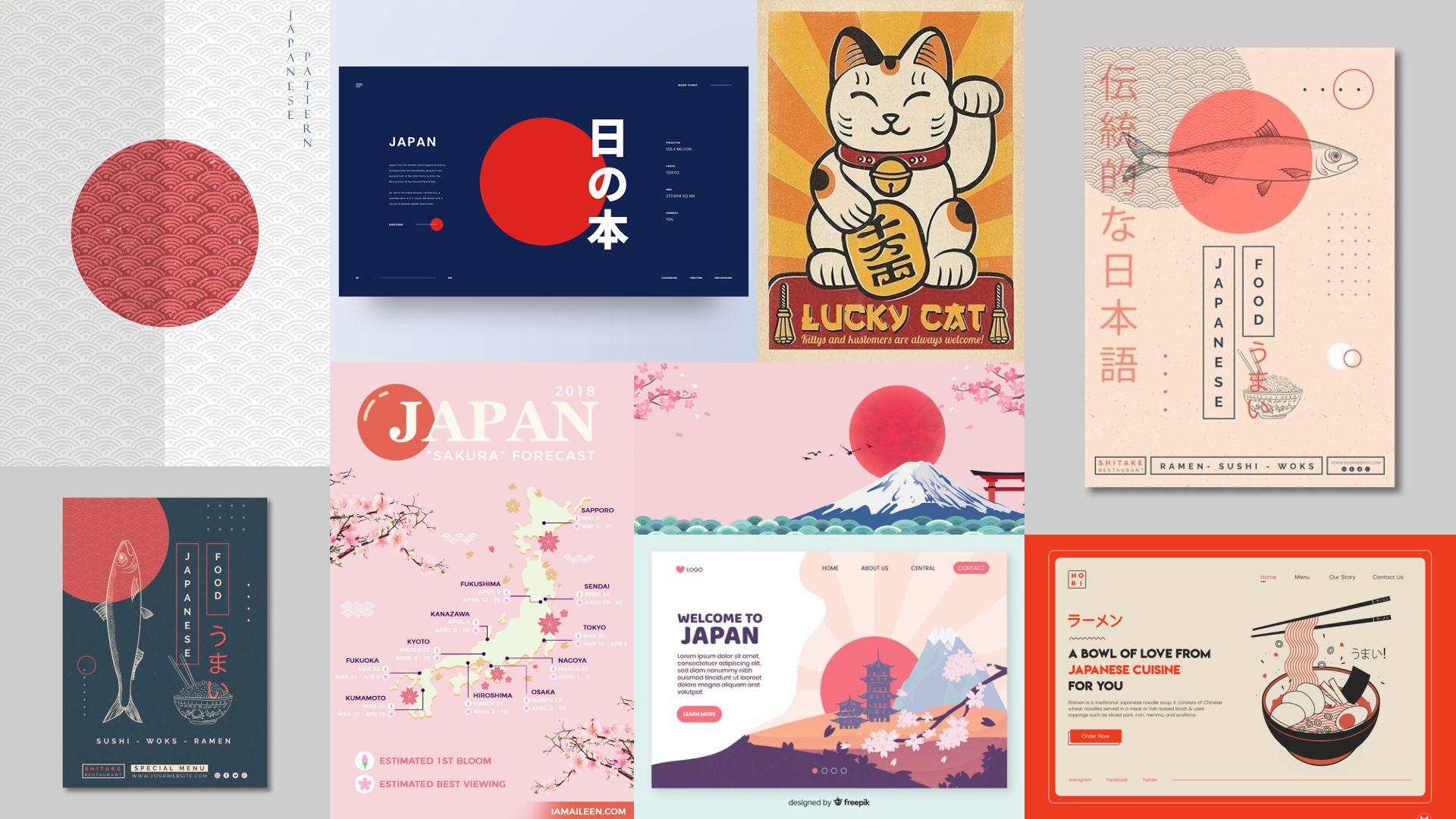
Choosing the best prototype
After pondering I decided the sketch I would transform into my prototype and tested some colors that resembled Japan, based on the moodboard.
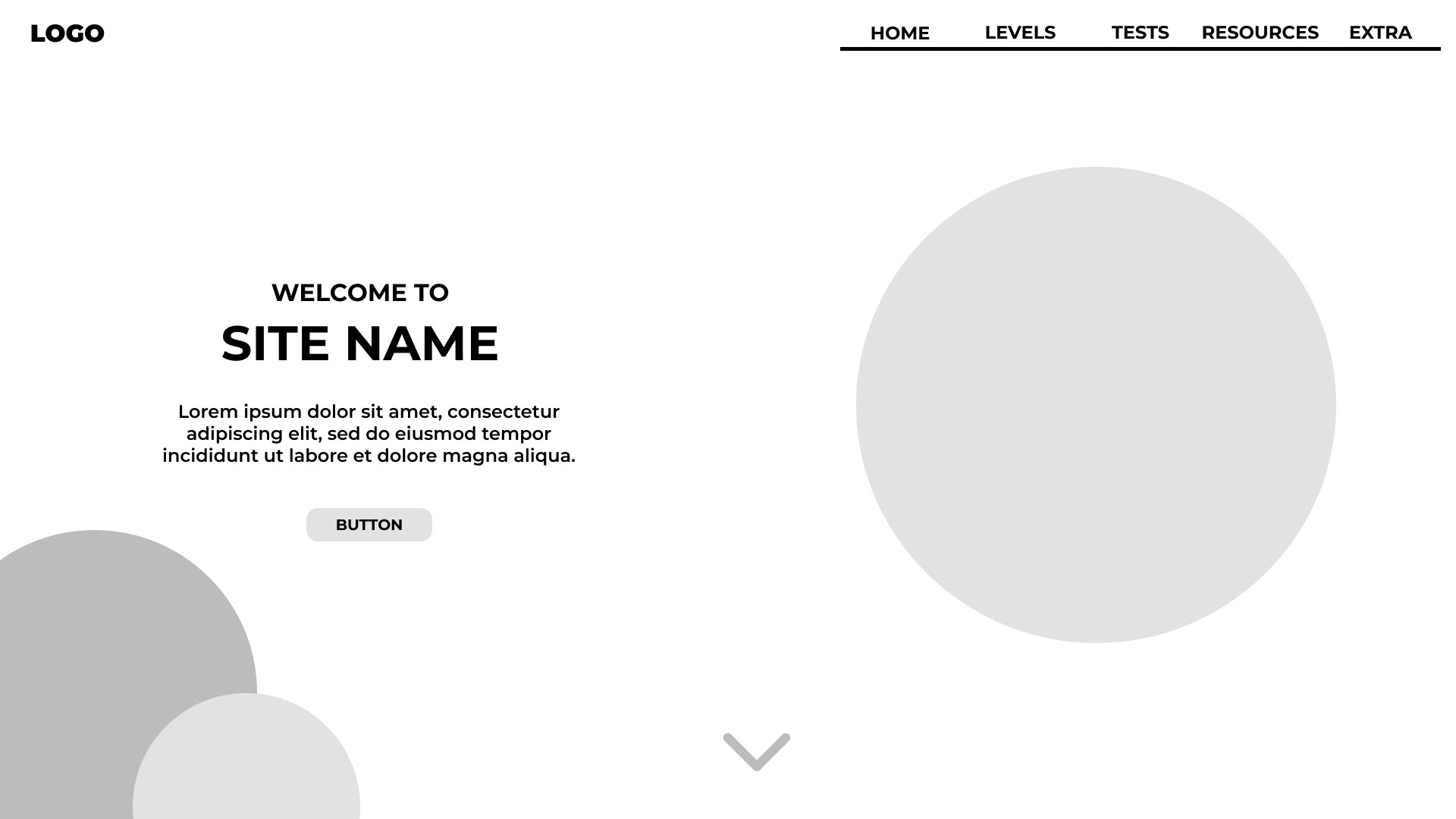

Final screens

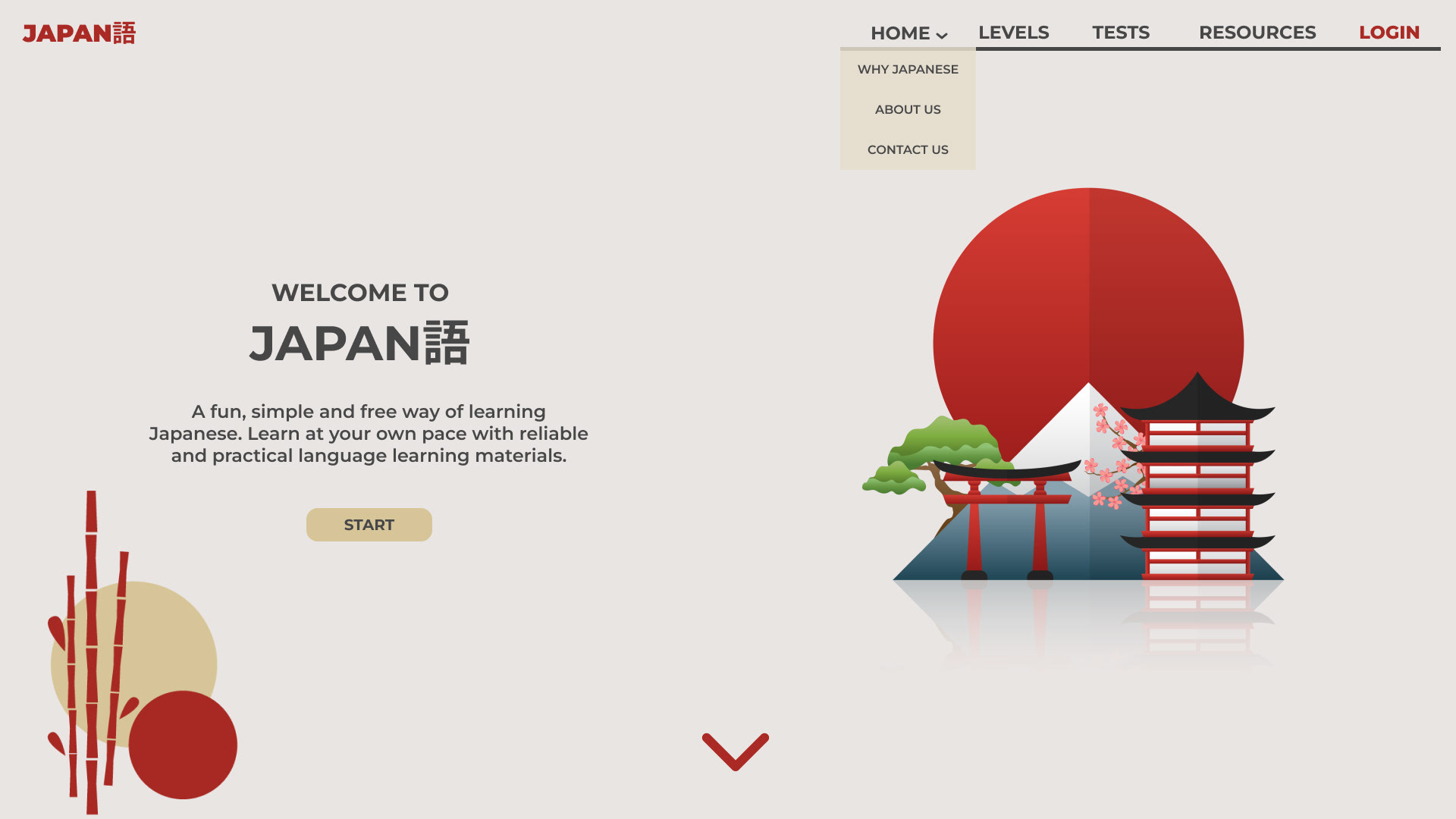
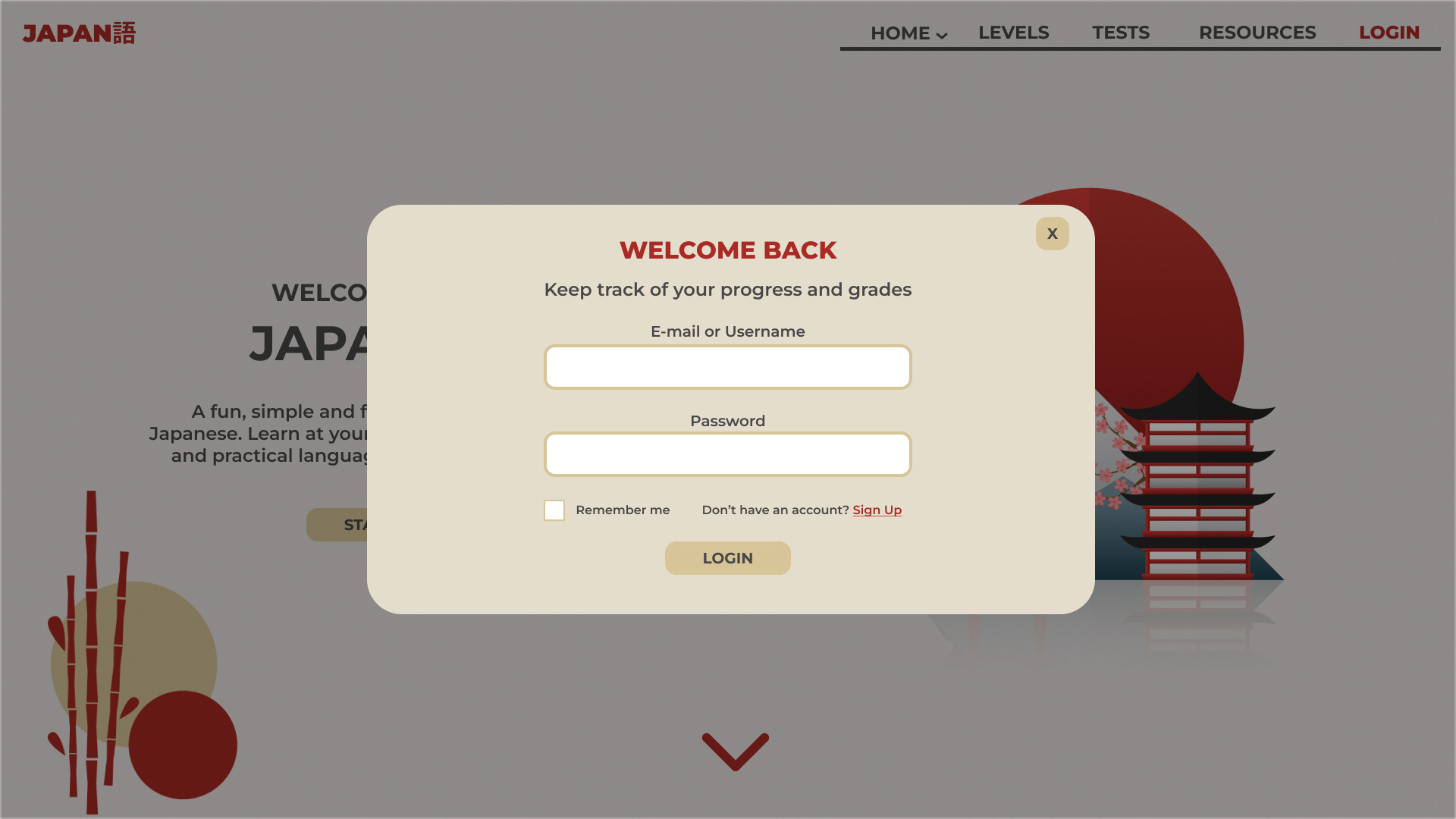
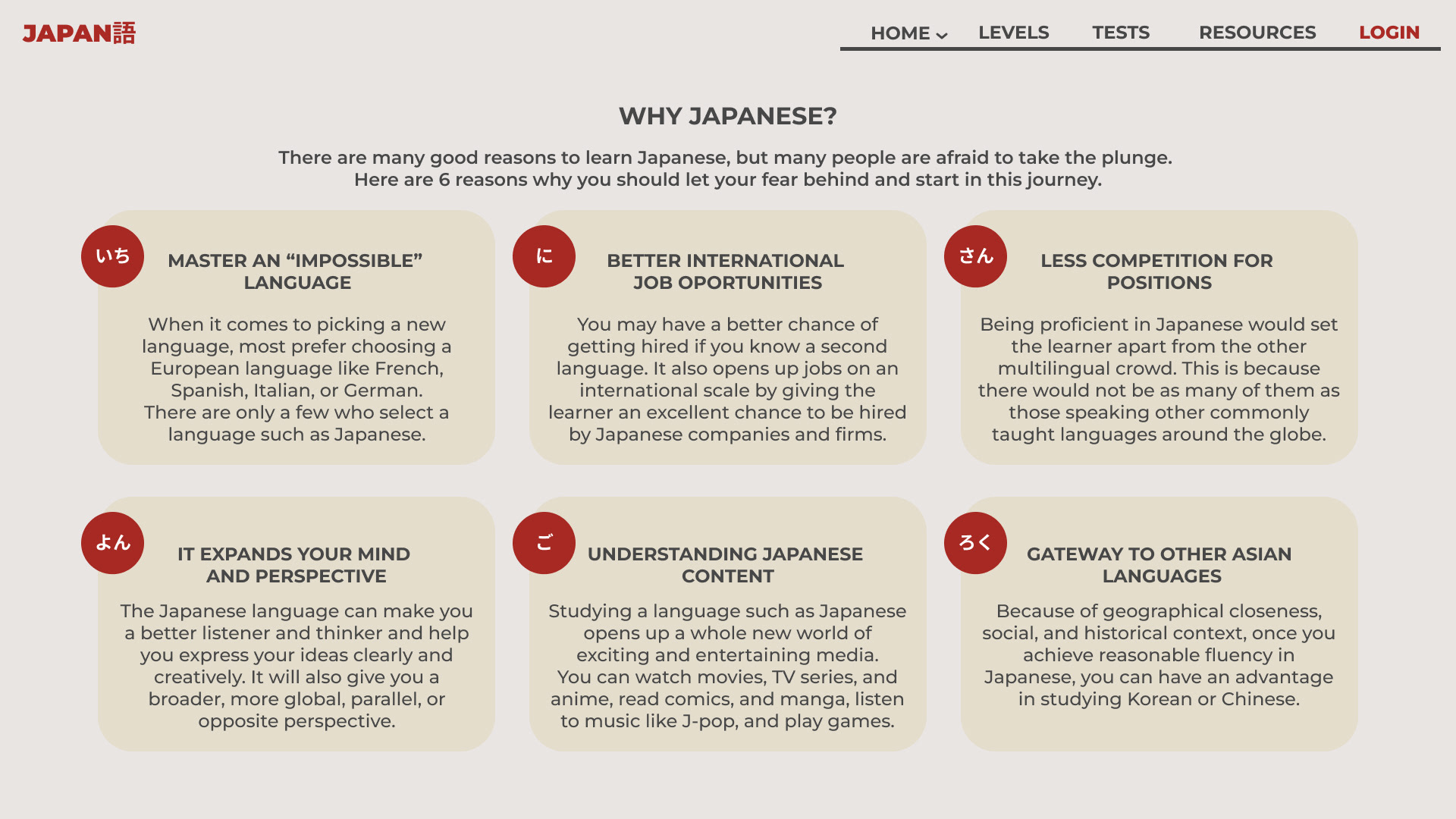
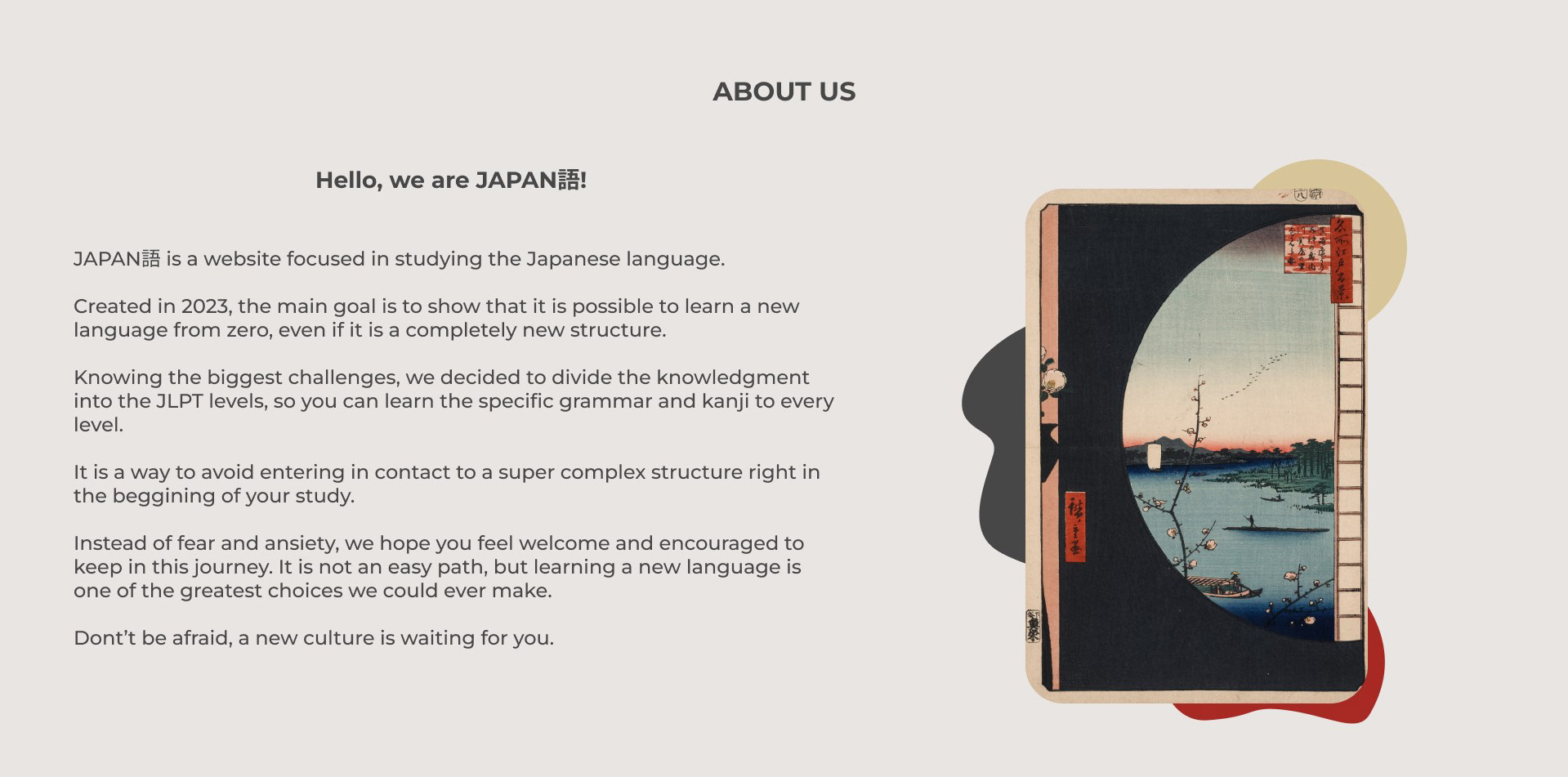
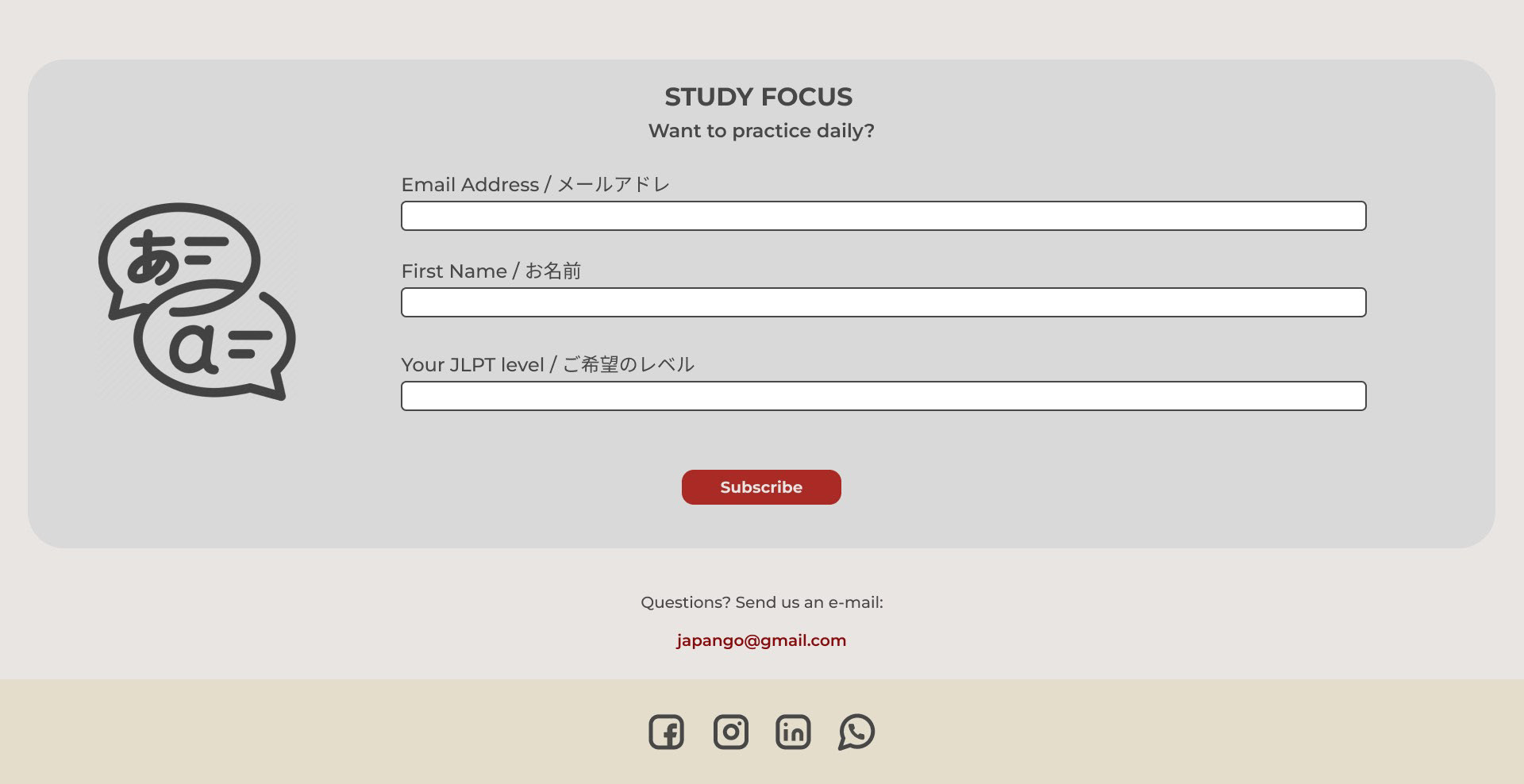
UI Kit
The project's UI Kit features the choice of colors, font, and components.
All choices were made in surveys and interviews with users in order to understand what the website needed.
Purposes: To have a simple and intuitive website.
How: Use of Japan-related colors.
Use of simple shapes.
Use of a simple and easy-to-read font.
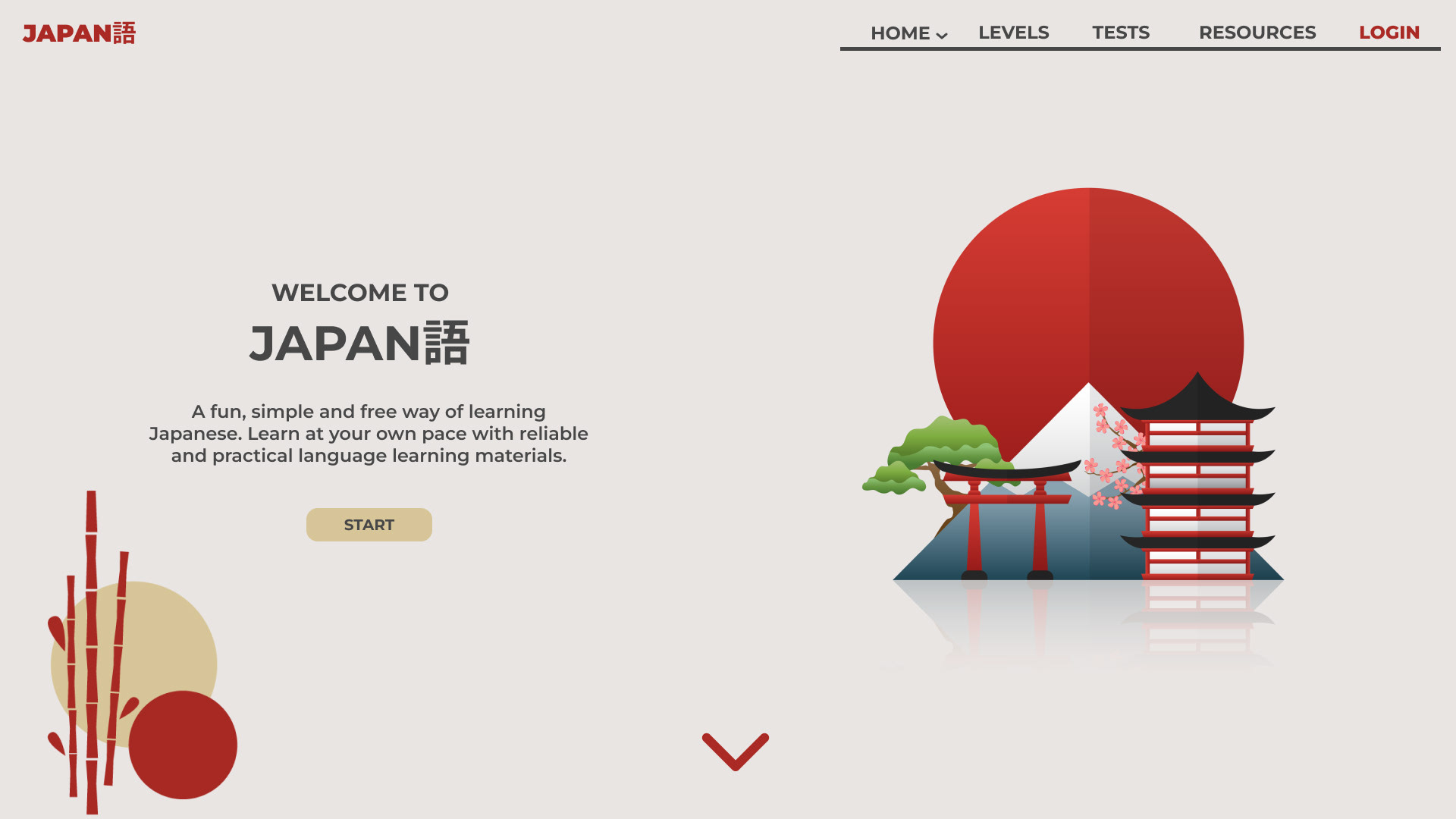
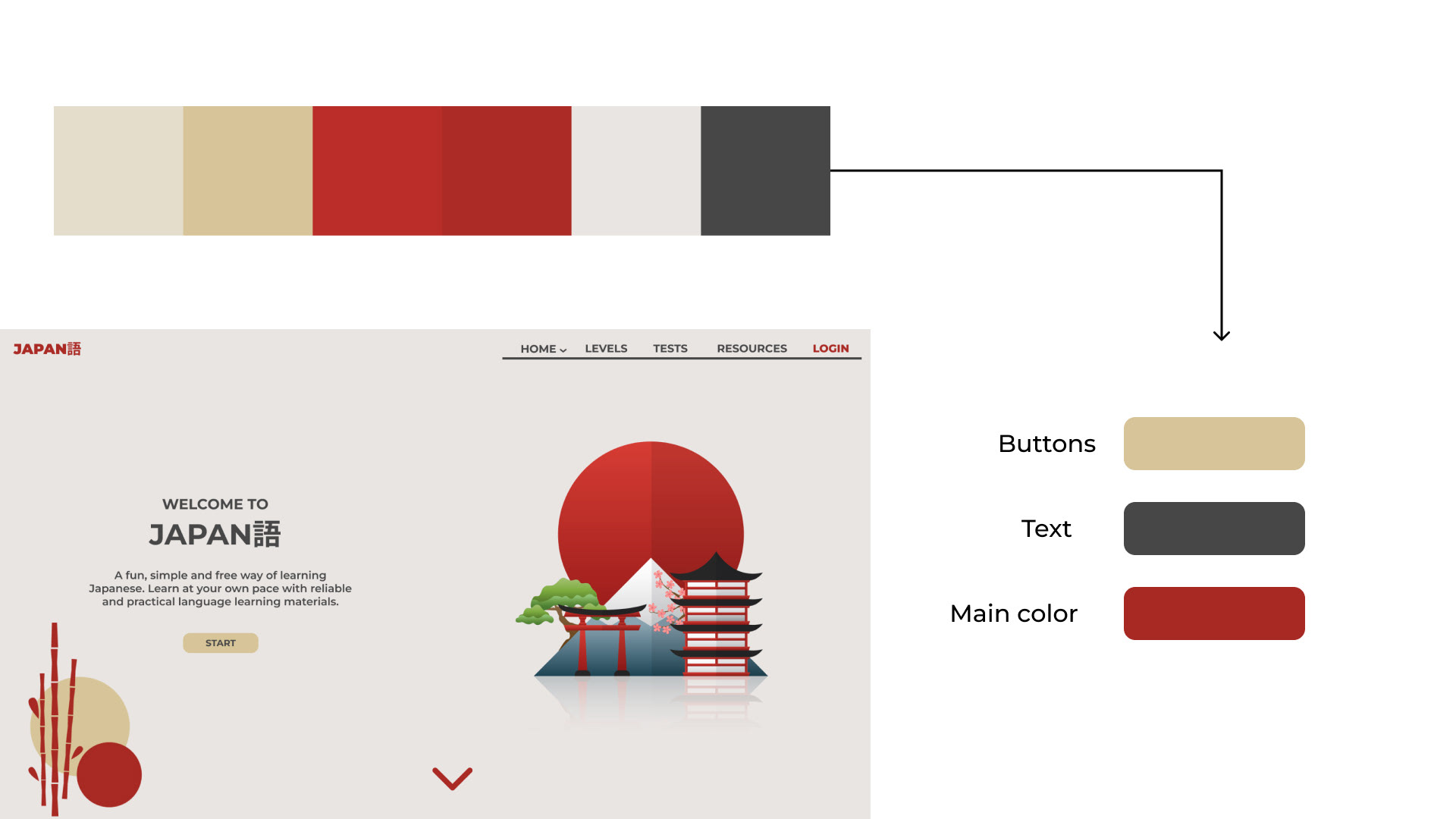
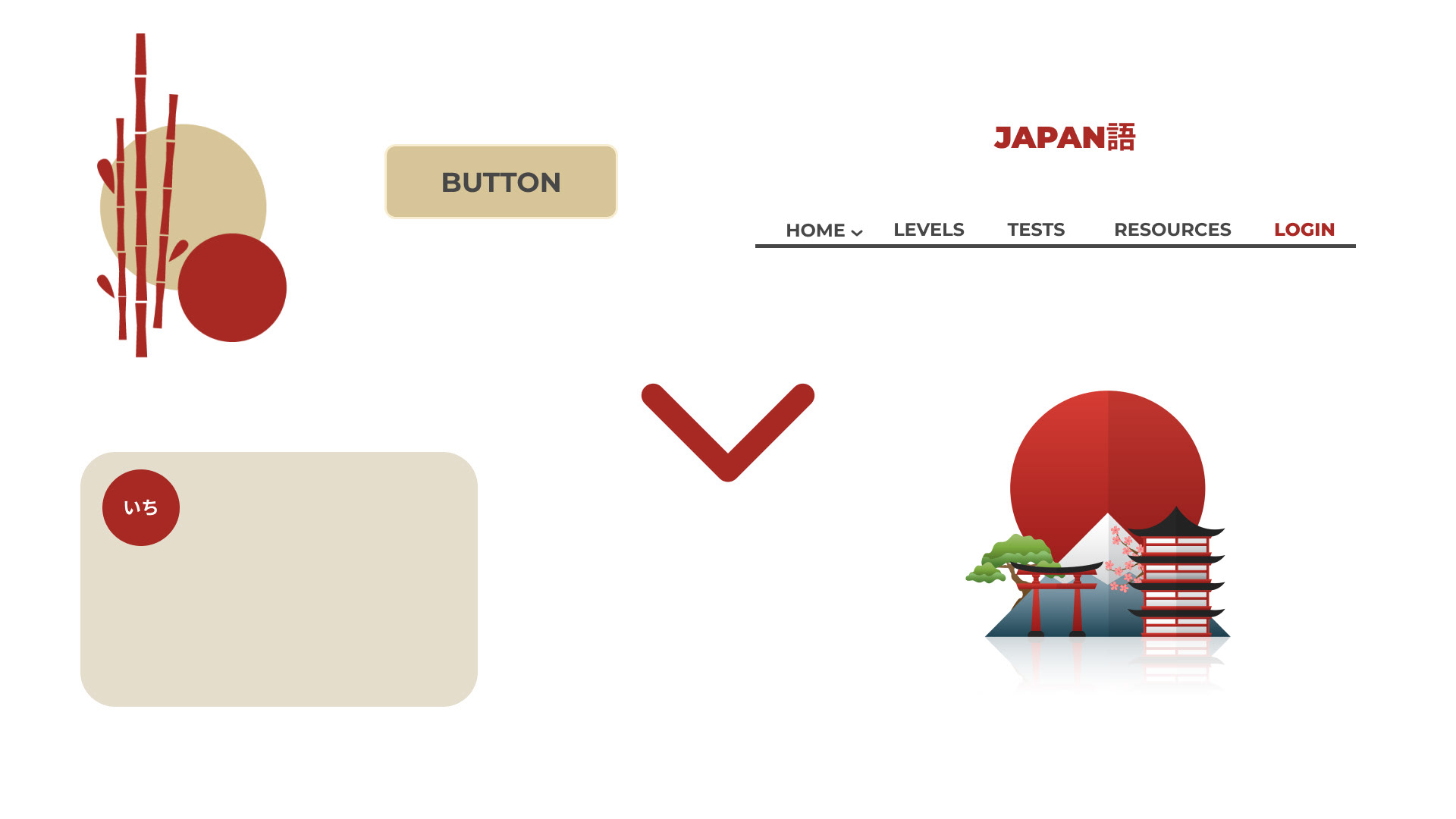
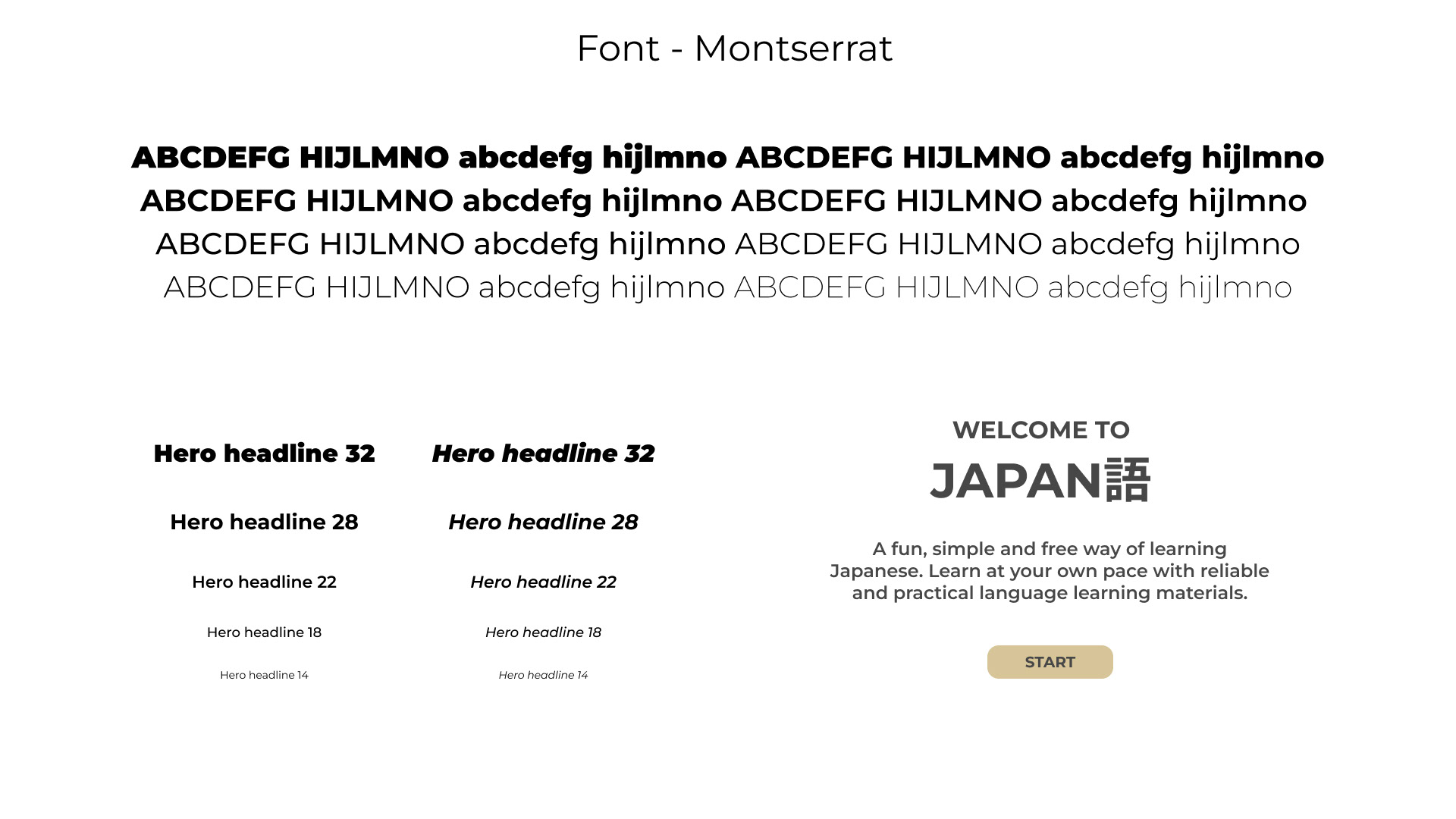
Final project
